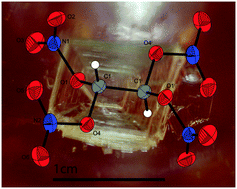
Aerial view of oil sands operations in Northern Alberta
with the Athabasca River in the foreground. Image courtesy of CBC.
As a chemistry graduate student who analyzes the tailing pond waters of Northern Alberta's oil industries, I can say that I know some things about what is in the tailing ponds water.
I cannot say, however, that I know much about the politics of environment, health, rights, and bitumen--except for the injustices we hear in the media generally: Choruses of "No pipelines" and "increased consultation" being mowed down by "We're going to build it anyway".

We are surrounded by examples of how natural resource development and management (in Canada and US) are very divisive issues. Featured here are the #NODAPL protest against the Dakota Access Pipeline and a T-shirt logo.
A reality is that pipelines bring jobs and revenue along with the bitumen, which are important to Canadians. Another reality is that pipelines bring disturbance and sometimes destruction to the environment we need and love. We need sources of energy. We need a clean environment. We need to execute decisions. We need to make the right decisions in broad consultation. Which do you think happens?
One week ago, I became interested in what was going on in Parliament regarding the Alberta Oil Sands operations. Much of my extended family lived and worked in Fort MacMurray and it has become the subject of my PhD work. With the recent hit the Canadian oil industry has taken, and the countless lives that have been effected by it, I was intensely curious about what the Government of Canada had in mind for this massive natural resource of ours.
Sure enough, the Standing Committee on Natural Resources was "having a time" chatting about this very issue, but also about the mineral mining sectors and nuclear energy. I was having some questions:
Was more money being put in to support natural resource development? The current Libéral Government campaigned openly about their future spending. Now that they've been elected, they are figuring out how they should spend money. Scientists know that money is being put into science, technology and innovation already which means more opportunities to develop knowledge into innovative technology. That's great for us...
Were measures being put into place that would ensure appropriate consultation with First Nations over the use of their land?
Would environmental assessment get a makeover? Would it include Professional Chemists?
From what I've read, all the above are being addressed and consulted on. There are also no signs of "shutting down" the oil sands or any other natural resource project amid the discussions. So many interesting and influential witnesses are being interviewed in Parliament and I am learning a lot. Full list is here under "witnesses".
 I am looking forward to covering what is talked about in these meetings via blog posts. What will the decisions made do to Universities and their relationships to Industry and innovation? How much more money will I get!?? Will it be easier to make connections between communities, educational institutions, government and industries? Technology transfer? Knowledge mobilization? Innovation and sustainability in the era of climate change?
I am looking forward to covering what is talked about in these meetings via blog posts. What will the decisions made do to Universities and their relationships to Industry and innovation? How much more money will I get!?? Will it be easier to make connections between communities, educational institutions, government and industries? Technology transfer? Knowledge mobilization? Innovation and sustainability in the era of climate change?THINGS TO READ BEFORE JUMPING IN
Here are some things you should read prior to Meeting 4 (in order)
- Prime Minister Justin Trudeau's Mandate Letter to Hon. Jim Carr
- Meeting 2 Introductory Session (Mandate) (Text)
- Meeting 2 Introductory Session (Mandate) (Video)
I am currently 29 meetings behind schedule, so you'll have to bear with me. The next meeting is November 15. Happy Remembrance Day in gratitude or our Veterans, Armed Forces and all others.






















